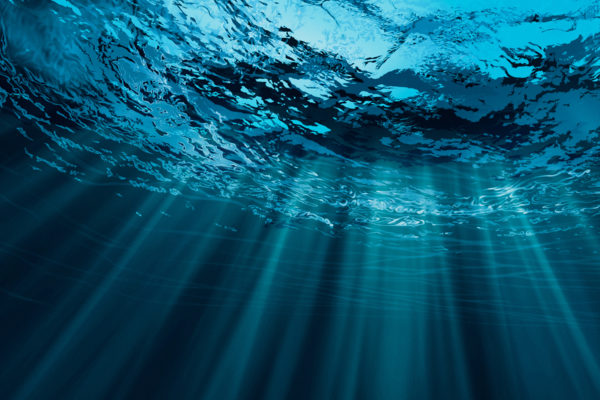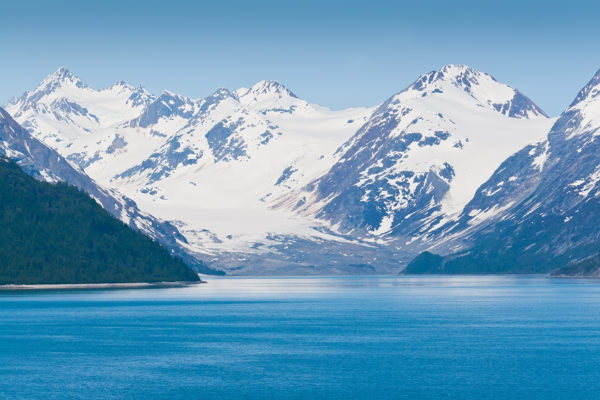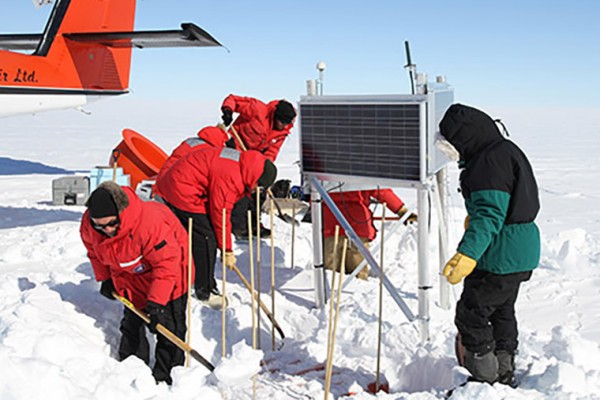What a deep dive into the deep blue sea is teaching us
Slow-motion collisions of tectonic plates under the ocean drag about three times more water down into the deep Earth than previously estimated, according to a first-of-its-kind seismic study that spans the Mariana Trench. The work has important implications for the global water cycle, according to Douglas A. Wiens in Arts & Sciences.
Wiens, Shore to study seismic activity on Alaskan coast
Douglas Wiens, the Robert S. Brookings Distinguished Professor in Arts & Sciences at Washington University in St. Louis, and Patrick Shore, staff scientist and lecturer in earth and planetary sciences in Arts & Sciences, will collaborate with eight other institutions on a $4.5 million National Science Foundation study of a volatile volcano and earthquake zone on the sea floor off the Alaskan Peninsula.
2010 Chilean earthquake triggered icequakes in Antarctica
In March 2010, the ice sheets in Antarctica vibrated a bit more than usual as a surface wave from an 8.8-magnitude earthquake in Chile 3,000 kilometers away passed through the ice. Powerful earthquakes were known to trigger secondary quakes along faults in land; this was the first observation of triggered quakes in the ice. Washington University in St. Louis seismologist Doug Wiens says the finding is one of several discoveries made possible by POLENET, an array of seismic stations that reaches for the first time into the interior of Antarctica.
Storms, soccer matches hidden in seismometer noise
Who knew? The chance discovery that spikes in seismometer noise recorded in Africa corresponded with soccer matches has led to the discovery that there’s a lot more buried in the noise, including a signal from the famous storms of the Southern Atlantic Ocean, the bane of ships of sail.
Data show Antarctic ice stream radiating seismically
Image courtesy of Doug WiensDouglas Wiens (left), and a colleague ready equipment to emplace seismographs in Antarctica during a 2001 expedition.A seismologist at Washington University in St. Louis along with colleagues at Pennsylvania State University and Newcastle University in the United Kingdom have found seismic signals from a giant river of ice in Antarctica that make California’s earthquake problem seem trivial. Douglas A. Wiens, Ph.D., professor of earth and planetary sciences in Arts & Sciences, and colleagues combined seismological and global positioning system (GPS) analyses to reveal two bursts of seismic waves from an ice stream in Antarctica every day, each one equivalent to a magnitude seven earthquake.
Earthquake in Illinois could portend an emerging threat
Two seismologists at Washington University in St. Louis think the New Madrid Fault may have seen its day and the Wabash Fault is the new kid on the block. “I think everyone’s interested in the Wabash Valley Fault because a lot of the attention has been on the New Madrid Fault, but the Wabash Valley Fault could be the more dangerous one, at least for St. Louis and Illinois,” said Doug Wiens, professor of earth and planetary sciences in Arts & Sciences. “The strongest earthquakes in the last few years have come from the Wabash Valley Fault, which needs more investigation.”
Earthquake seminar addresses ways to lessen damage
The Department of Mechanical, Aerospace and Structural Engineering continues its series of seminars and workshops on the topic of reducing the damage that would occur if a strong earthquake strikes the New Madrid fault area again. The first program covered subjects of hazards, codes, vulnerability and strengthening of infrastructure. The speakers were practicing engineers and […]
Earthquake seminar addresses ways to lessen damage
The Department of Mechanical, Aerospace and Structural Engineering has begun a series of seminars and workshops on the topic of reducing the damage that would occur if a strong earthquake strikes the New Madrid fault area again.
Seminar to address ways to lessen earthquake damage
The Department of Mechanical, Aerospace and Structural Engineering at Washington University in St. Louis is presenting a series of seminars and workshops on the topic of reducing the damage that would occur when a strong earthquake strikes the New Madrid fault area again.
Study: Wireless sensors limit earthquake damage
Shirley Dyke (left) and Pengcheng Wang adjust wireless sensors onto a model laboratory building in Dyke’s laboratory. An earthquake engineer at Washington University in St. Louis has successfully performed the first test of wireless sensors in the simulated structural control of a model laboratory building. Shirley J. Dyke, Ph.D., the Edward C. Dicke Professor of Civil Engineering and director of the Washington University Structural Control and Earthquake Engineering Laboratory, combined the wireless sensors with special controls called magnetorheological dampers to limit damage from a simulated earthquake load. More…
View More Stories



